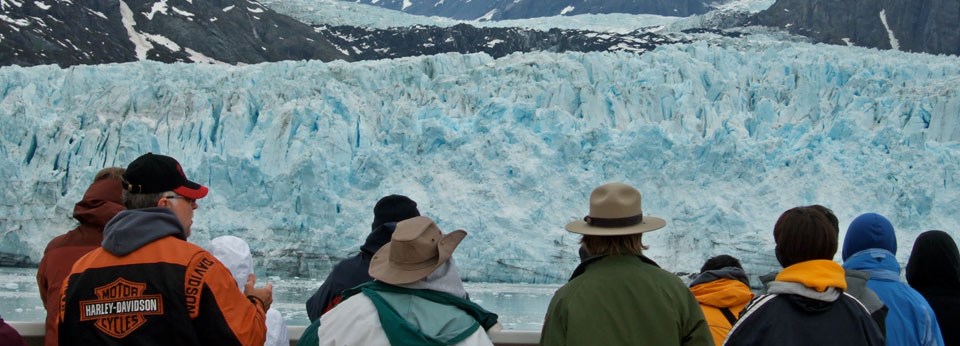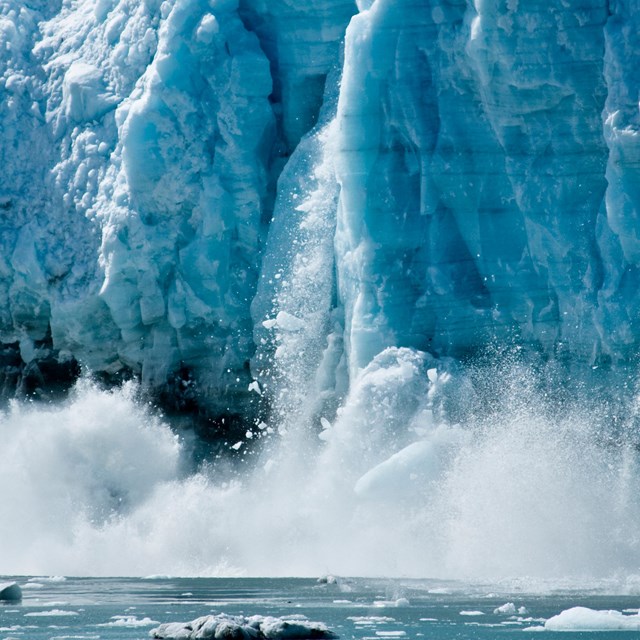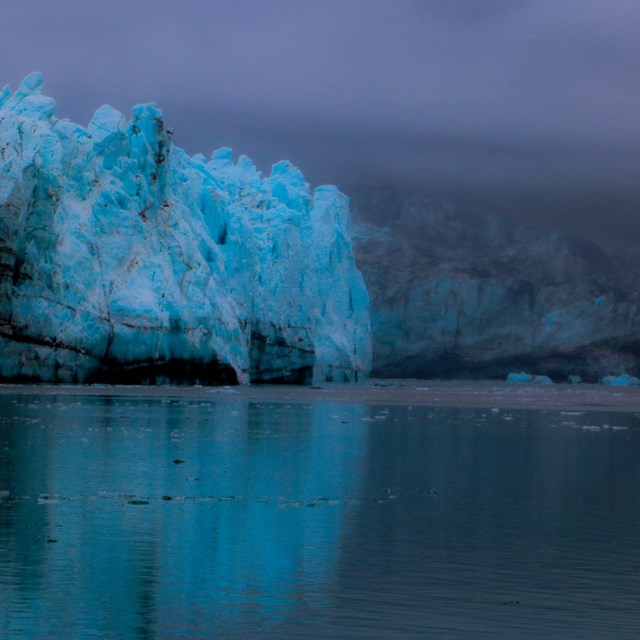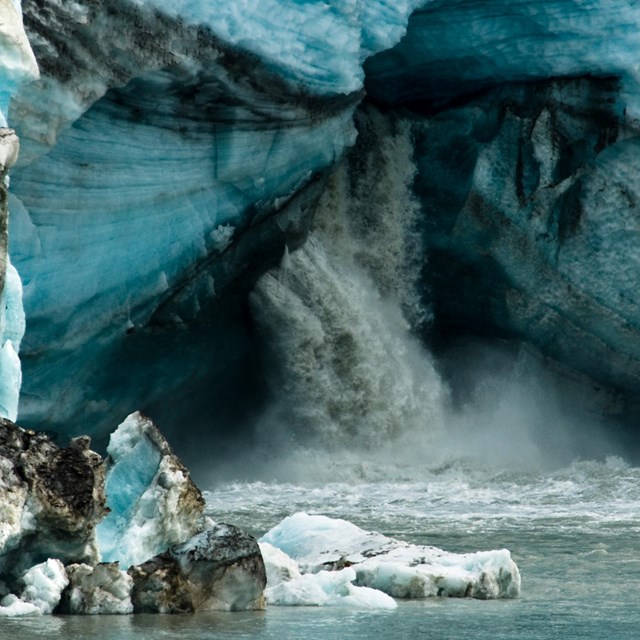
Burning Questions about Glacial Ice
Glaciers form where more snow falls than melts over a period of years, compacts into ice, and becomes thick enough to begin to move. That is, a snow patch becomes a glacier when the deepest layers begin to deform due to the weight of the overlying snow and ice. Why are glaciers blue? Because the red (long wavelengths) part of white light is absorbed by ice and the blue (short wavelengths) light is transmitted and scattered. The longer the path light travels in ice, the more blue it appears. So... why is snow white? Light does not penetrate into snow very far before being scattered back to the viewer. However, the next time you are in an igloo, notice that it is blue inside. You can also poke a stick into some snow, shade the area around the hole, and look deep into the snow pack. The light that has traveled some distance through the snow will be enhanced in blue. Is glacier ice colder than regular ice? No - indeed, all of the physical, thermal and electrical properties of "regular icebox ice" and glacier ice are identical: density, viscosity, heat of fusion, latent heat, heat capacity, dielectric constant, thermal conductivity, absorption, emissivity, etc. The few small differences in characteristics are solely due to grain size differences (see 3.1). NOTE: High-pressure forms of ice with different properties have been produced in laboratory experiments, but none occur naturally on earth, not even at the base of the Antarctic or Greenland ice sheets. But doesn't glacier ice last longer in drinks!!!??? Yes - a little, but only because the ice crystals are larger. Crystals melt from the outside and large crystals expose less surface area per unit volume of ice; therefore, ice with larger crystals melts more slowly. When a glacier retreats, does the ice go back up the valley? No - like water, ice flows down its surface gradient, is rarely pushed up, and never goes back up valley. Retreat occurs when melting or calving removes ice more quickly than glacier flow replenishes it. How many glaciers are in Alaska? There is no certain answer. There are 616 officially named glaciers in Alaska (see USGS Geographic Names Information System online data base), and many more unnamed glaciers. The Alaska Almanac estimates that Alaska has 100,000 glaciers -- that’s a pretty good estimate. There are approximately 1000 glaciers in Glacier Bay National Park. How many glaciers in Alaska have floating termini (or terminuses and which is it)? None - all the calving glaciers in Alaska fill their fjords completely to the bed. Ice shelves (floating ice at a glacier’s terminus) occur only on the "cold" glaciers (see Myth number 4) in Antarctica and Greenland. In Alaska, parts of some retreating calving glaciers are close to floating (such as Columbia and Portage Glaciers. What makes a glacier different from an ice cube or ice in a hockey rink? A glacier must: be formed from natural atmospheric precipitation (snow) move by internal deformation due to its own weight NOTE: these criteria exclude "aufeis" which is the technical term for the "glaciering" or "icing" that form during winter where emerging ground water freezes, often encroaching onto highways and trails. How thick are glaciers? A good guess is that the ice thickness is about one-half of the surface width of the glacier. Although few glaciers have been measured, the measured thicknesses range from a few tens of meters for small glaciers to about 1,500 meters for the largest glaciers in Alaska. 
Myths About Glaciers:Iceworms are a joke originated by gold rush poet Robert Service (see Ballad of the Iceworm Cocktail). They are real - they are annelid worms (class Oligochaeta); several species are recognized. Also, there are several insects and algae that live on the surfaces of glaciers. Alaska was covered by glaciers during the Great Ice Age (Pleistocene). No - interior Alaska was a grassland refuge habitat for a number of plant and animal species during the maximum glaciation. Today's glaciers are leftovers from the ice age … and … Glacier ice is "really old. " Sort-of and no - we must distinguish between glaciers and the ice in glaciers. Like the difference between rivers and the water in rivers: it takes a few weeks for water to travel the full length of the Mississippi river; however there has been a Mississippi River for thousands of years. Likewise, glaciers have existed in the mountains ever since the ice age, but glacier flow moves the snow and ice through the entire length of the glacier in 100 years or less. So, most of the glacier ice in Alaska is less than 100 years old! Therefore, most of the glacier ice is not ice-age leftovers. NOTE: There is "really old" ice near the bases of the Greenland and Antarctic ice sheets and in a few special places in the world’s mountains. What about the mammoths and giant bison found in ice? The remains of prehistoric animals are indeed found in ice, but not glacier ice. Frozen fossil animals are found in permafrost. Permafrost may be many tens of thousands of years old. But, the Copper-Age "Iceman" found during 1991 in the European Alps was "in a glacier." Special circumstances preserved the Iceman. His body was not destroyed when the site was over-ridden by a glacier because it was near the edge of the glacier in a protective bedrock depression. Had he truly been in a glacier, he would have been ground to flour. Glacier ice is very cold. Not really - most of the glacier ice in Alaska is only a few tenths of a degree below the melting temperature, except for a surface layer a few meters thick that is cooled during winter. As a consequence, most glaciers in Alaska are not frozen to their beds. These glaciers are referred to as "temperate" glaciers. Glaciologists refer to a glacier as a "cold" glacier if it is more than a few degrees below the freezing temperature throughout most of its thickness.
|
Last updated: August 15, 2023



